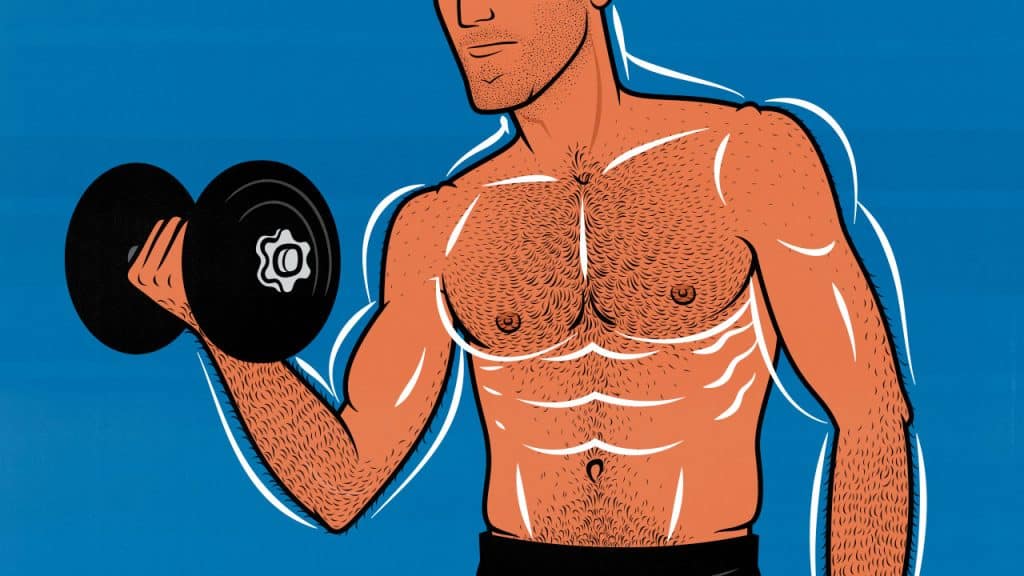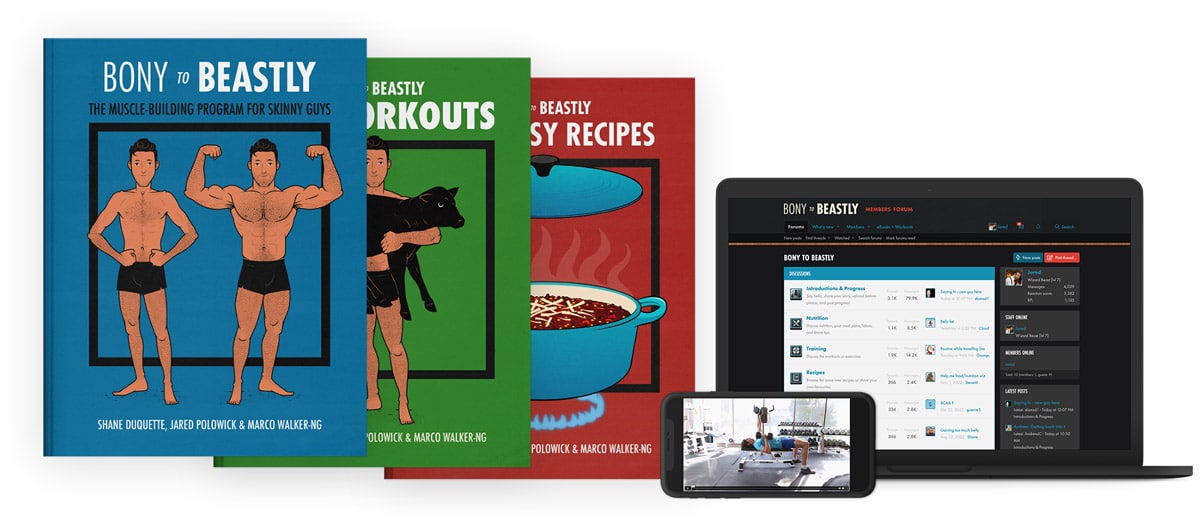
What is Bulking Season?
Bulking season is the time of year when you intentionally gain weight to support muscle growth. It’s part of a long tradition of setting aside certain parts of the year for performance and other parts of the year for improvement. There’s a surprising amount of wisdom in that tradition.
It’s similar to the “off-season” athletes have. It’s the period of the year when they aren’t competing, allowing them to focus on getting bigger, stronger, and fitter. The most relevant example is bodybuilders. They need to get lean for their bodybuilding competitions, meaning they need to spend several months cutting. During that period, they have so little body fat and eat so little food that they have no hope of building any muscle. Their “off-season” is a chance to get into a calorie surplus, regain a healthy amount of body fat, and start building muscle again.
“Bulking season” is far more casual, but it offers even greater advantages.

When is Bulking Season?
“Bulking season” doesn’t have a specific start date, but it usually starts in the fall. If summertime is when you want to show off your abs, then you need to cut in the spring to be lean by summer. Then, when the cold winds come, your shirt goes back on, and you can get back to building muscle. Any muscle and fat you gain will make you look bigger in clothes.
Cutting during the spring and summer isn’t just about showing off your abs. When you eat less food, you produce less body heat, making the summer months more comfortable. Similarly, bulking in the Fall raises your body temperature, allowing you to weather the cold more easily.
You might also find it easier to focus on improving your cardio during the warmer, sunnier months and prefer toiling away in the iron dungeon during the colder, darker months.

Should You Alternate Between Bulking & Cutting?
Alternating between bulking and cutting is necessary for professional bodybuilders. They don’t really have a choice. They need to get lean for competitions, meaning they need to cut. After finishing those competitions, they first need to regain a healthy amount of body fat, and then they can get back to gaining muscle. This creates a cycle of bulking and cutting, with a specific season for each.
Bulking and cutting can also work quite well for everyday lifters. If you weigh less than you’d like to, you’ll need to bulk up to your target body weight. You could try to build muscle without gaining weight, and you might succeed for a while, but if you want to be heavier, you’ll need to gain weight eventually. In my case, that meant bulking up from 130 to 200 pounds.
If you’re overweight, you’ll need to cut to get back down to a healthy body weight. You could recomp while staying at the same weight, but if you have too much weight, you’ll need to get rid of it at some point. If you’re trying to go from 220 down to 190 pounds, you can’t avoid cutting forever.
You could get to the body weight you want and stay there indefinitely. But you’ll eventually hit a plateau. At that point, you’ll need to bulk up to gain more muscle and strength. You could bulk slowly and leanly, but that’s still bulking, and you’ll probably still gain a little fat.
As you bulk, your metabolism will probably speed up, forcing you to eat ever larger amounts of food. As your calorie requirements rise ever higher, your appetite will shrivel until it’s nothing but a small pit of despair. This can make bulking unsustainable. At some point, you’ll probably need a break.
When you take a break from bulking, you might naturally eat in a calorie deficit. Most of our readers are naturally thin, so the fat melts off by itself. We call this Reverse Bulking. It’s a very casual form of cutting. If you aren’t naturally lean, or if you’re in a hurry, you might need to do a deliberate cut.
At a certain point, you might want to bulk up again, and the cycle begins anew.
How to Bulk Quickly & Leanly
The best way to bulk up is to stimulate muscle growth with hypertrophy training, then eat enough food to gain weight, and then get enough restful sleep. Those links will take you to articles explaining each part of the process.
- Classic bulking: To make relatively lean gains at a relatively quick pace, you can do a classic bulk, eating in a moderate calorie surplus. This makes for the best default.
- Aggressive bulking: To bulk up faster, you’d train even more rigorously, eat in an even bigger calorie surplus, and put even more emphasis on proper recovery. This is how I gained my first 50 pounds.
- Lean bulking: To bulk up more leanly, eat in a smaller calorie surplus, leaving fewer extra calories that can spill over into fat gain. You might need to track your calories.

If you want us to walk you through the entire bulking process, check out our Bony to Beastly (men’s) program or Bony to Bombshell (women’s) program. They include a 5-month customizable workout routine, a full bulking diet plan, a bulking recipe book, a deep dive into lifestyle and fitness, and coaching from us.


Muscle-Building Mini-Course via EMAIL
Sign up for our 5-part muscle-building mini-course that covers everything you need to know about:
Here are some related articles